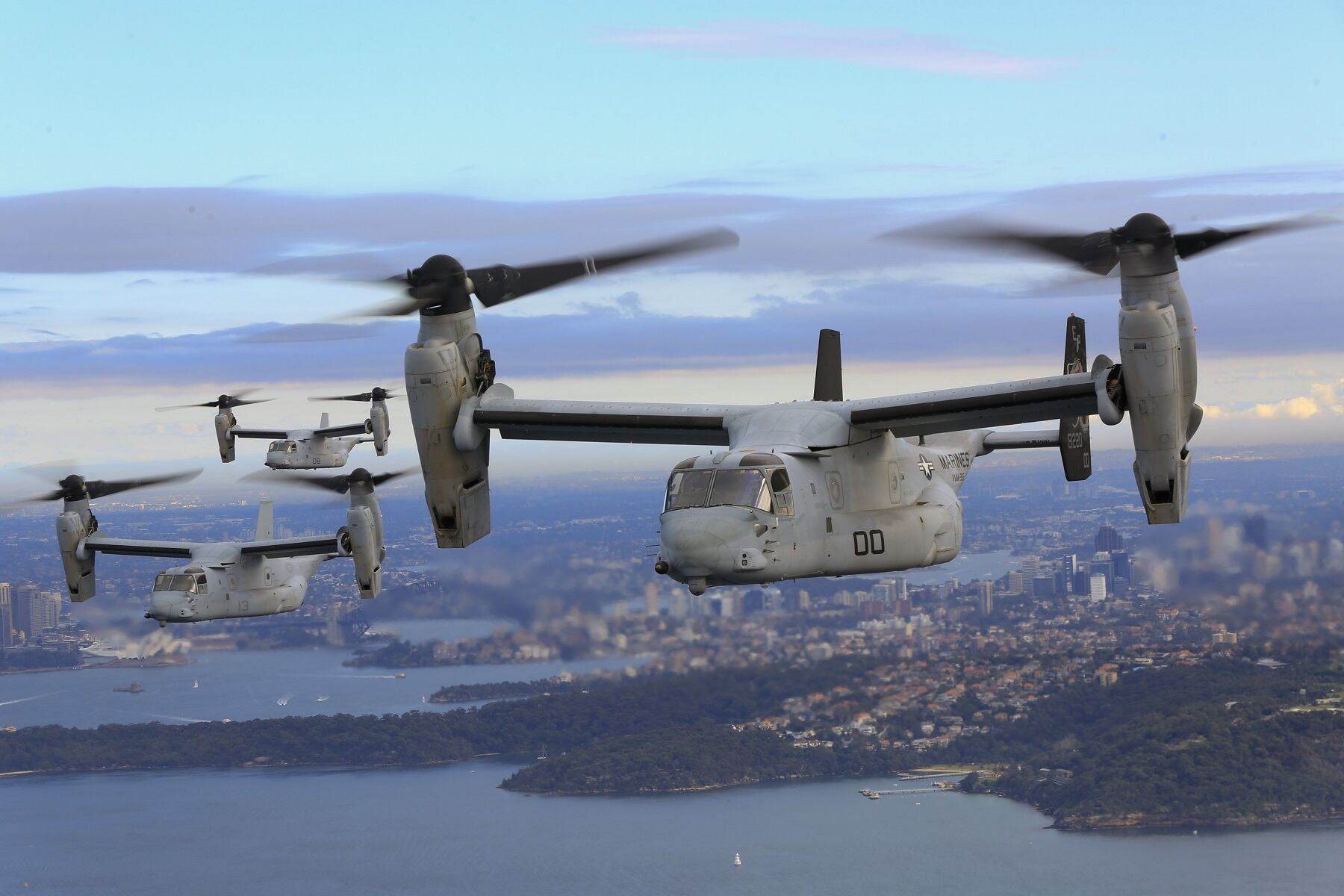NATIONAL HARBOR, Md. — There’s been a lot of discussion about the Navy’s progress towards F-35 Joint Strike Fighter integration into a carrier air wing, and the first operational deployment is slated to be on the aircraft carrier Carl Vinson in 2021.
What isn’t included in most Navy F-35C discussions, however, is the fact that any first deployment of the Navy’s JSF can’t happen without the CMV-22 Osprey, soon to be the Navy’s new carrier onboard delivery aircraft.
That’s because the Osprey is currently the only aircraft that can land on a carrier flight deck with a large and heavy F-35C engine tucked inside its fuselage.
RELATED

The aircraft that will actually deploy in 2021 have yet to be built, but they will be here fast.
“Carrier onboard delivery has always been a mission profile for this aircraft from the start,” Rich Meanor, a Boeing global marketing representative, said at the Navy League’s annual Sea, Air and Space exposition.
“It’s no secret that the Marine Corps has been flying these aircraft at sea for sometime now, but the Navy’s CMV-22B will have slight modifications to better suit it for carrier operations.”
Those modifications come in the form of greater fuel capacity in the fuselage and wings that will allow the aircraft to carry up to 6,000 pounds for a distance of 1,100 nautical miles. That doesn’t quite rival the aircraft it’s replacing, the C-2A Greyhound, which has a cargo capacity of 8,000 pounds and a range of nearly 1,400 nautical miles.
A special high-frequency antenna has also been added to help the aircraft navigate long distances over open water, a feature Meanor said the Marine Corps version didn’t need. There’s also a beefed up cargo compartment intercom system, as the aircraft will also ferry people to and from the carrier.
The Navy will soon field two prototype aircraft featuring all the new bells and whistles, with the first one expected to be delivered in late 2019. The production models are expected to start rolling off the assembly lines sometime in 2020.
“The CMV-22B is expected to deploy in much the same fashion as the C-2A does and will most likely have similar three-aircraft detachments when they deploy with carrier air wings,” Meanor said. “But some of those details are still being worked out.”
The Navy has yet to decide where the fleet replacement squadron will be based, but it will either be Norfolk and San Diego.
“The Marine Corps has a training squadron at New River, North Carolina,” Meanor said. “There are Navy pilots already going through training there.”
Mark D. Faram is a former reporter for Navy Times. He was a senior writer covering personnel, cultural and historical issues. A nine-year active duty Navy veteran, Faram served from 1978 to 1987 as a Navy Diver and photographer.




